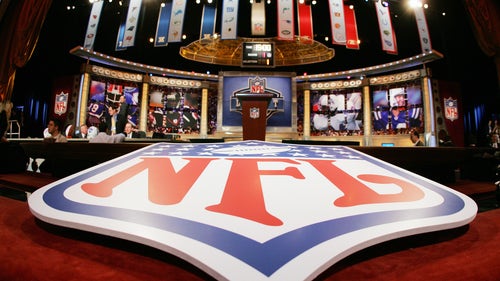Hunter-Reay credits aeroscreen for tire not hitting his head
ST. PETERSBURG, Fla. (AP) — Ryan Hunter-Reay saw the scuff marks on the safety screen surrounding his cockpit and went to find video of the crash he'd just walked away from.
It was then that
“I knew it was going to be a big impact. All of a sudden his car was in front of mine,” Hunter-Reay said Friday. “Natural human reaction at that point is you brace for it, close your eyes, kind of you just flinch — like you would blink if somebody clapped their hands in front of your face. And that was as quickly as it happened. I had no idea what the scenario actually looked like until I saw the video.”
Hunter-Reay went to the IndyCar trailer where he found series President Jay Frye and patted him on the back for, essentially, pushing for the safety device that probably saved Hunter-Reay's life Sunday at Barber Motorsports Park in Alabama. The aeroscreen most likely kept Newgarden's tire from striking Hunter-Reay's helmet.
“It wasn't overly dramatic or anything,” said Hunter-Reay, “I just said ‘This absolutely made a difference. So thank you for it.’"
Andretti Autosport repaired Hunter-Reay's car and aeroscreen and it was approved to race Sunday on the street course in downtown St. Petersburg. He finished last in the opener when he was collected in Newgarden's spin in the opening moments.
The aeroscreen was developed by Red Bull Advanced Technologies to cover the open-air cockpit with a clear screen that is anchored by a titanium framework. Its purpose is to protect drivers from flying debris and it delivered when first tested by two crashes at Iowa Speedway last July.
Will Power’s left front wheel came off his car and bounced within feet of his head. On an aborted restart later in the race, Colton Herta’s car catapulted over Rinus VeeKay, missing
Power said Friday he firmly believes the aeroscreen would have prevented the last two IndyCar fatalities. Dan Wheldon was killed in 2011 at Las Vegas when his head slammed into a pole in the fence and Justin Wilson died when a piece of debris struck his helmet at Pocono.
Wilson's death ultimately led to the development of the aeroscreen.
“To me, it would have prevented the last two deaths," Power said. “I'm pretty sure for Justin, it would have bounced off (the aeroscreen) and Dan would have ricocheted off (the fence). You can't say for sure, but it's a huge advancement. Huge.”
Frye said IndyCar is studying Hunter-Reay's crash but the aeroscreen "did what it was designed to do. I think if you look at the magnitude of what happened, and the condition that the current screen is in, it basically was untouched.
“There was some marks on the tearoffs, there was a wicker that goes down the front that was sheared off. Other than that it was basically unscathed.”
Formula One in 2018 mandated its crash-protection halo, a curved bar that surrounds the driver’s head and is connected by three points to the vehicle frame. Romain Grosjean credited it with saving his life in last November's fiery crash in Bahrain. Grosjean is now an IndyCar rookie who raced with the aeroscreen for the first time last weekend.
He said the aeroscreen made him feel a bit claustrophobic when he first sat in the car but as soon as he started driving he forgot the device was even there.
“It completely disappears," said Grosjean, who thinks visibility was the same between the aeroscreen and the halo. His one complaint of high temperatures in the cockpit has already been raised by IndyCar veterans.
“It's obviously an extra layer of protection, which is good,” said Grosjean. “The only thing is just the temperature goes super high in the car and aerodynamically you must be losing a fair bit, but we don't care because everyone feels safe.”
___
More AP auto racing: https://apnews.com/apf-AutoRacing and https://twitter.com/AP_Sports







